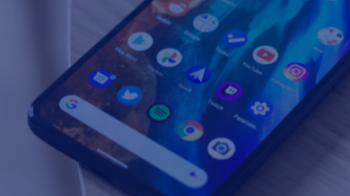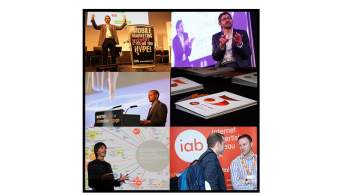Engaging users in the new age of mobile advertising
Rob Garber
It's time marketers started to see beyond tapping and swiping when thinking about mobile advertising, says Rob Garber, EMEA Managing Director of Undertone.
The glitzy launch of the Samsung 8 in April acutely demonstrated the rate at which smartphone technology is evolving. Iris and fingerprint scanners have brought biometric identification into the mainstream, while high-quality cameras can scan products and quickly find the best places to shop for them online. The recently announced DeX docking unit even turns the newest Samsung phone into an ultra-portable PC.
The sight of people tapping and swiping their phones has become a cultural phenomenon in itself—just take a visit to your local park or shopping centre. But is this stereotype in line with how people actually use their devices? As mobile technology advances (making greater use of new actions, data and experiences) consumers have more options than ever before for interacting with their beloved smartphones.
The challenge for marketers now is to plan mobile campaigns that go beyond inviting users to click, tap or swipe their phones. Advertisers who can find ways to use other functions are increasingly likely to stand out from those using classic mobile ad formats.
As research from our proprietary platform SparkFlow shows, ads that make use of native smartphone functions drive better results; such campaigns can have up to 50-times higher click-through rates than those using formats like mobile expandable banners alone. In addition, when consumers are engaging with your advertising outside of clicks alone, they’re also connecting with your brand in a far more meaningful way. Data from System1 found that 95 percent of our purchase decisions come from emotional reactions, rather than rational ones.
Any communications that can accommodate native functions are therefore more likely to strike a chord with device users. The key is ensuring that the campaign is creative in its execution, inviting users to interact with an ad in new and engaging ways.
So, what is possible for today’s marketers? Our UMotion mobile ad division has worked with clients to come up with some campaigns that push the envelope with new advertising formats specifically developed with smartphones in mind.
For instance, we’ve found that functions more commonly found in gaming applications have great potential for advertisers. Take accelerometers: these measure the extent to which a device is moved when tilted, twisted or similar and can correlate this with on-screen images. For ads, this means you can create a 3D scene and invite users inside to explore it, using their phone as a window onto the scene.
This creates interesting opportunities for advertisers to showcase locations, vehicles, buildings or products in their creative. The prospect of offering users virtual tours through their mobile devices is relatively untouched but has significant potential.
Imagine taking a quick look around a hotel before reserving or discovering an exclusive airport lounge before booking travel abroad. The immediacy and interaction of this capability inevitably draw users in and directly engages with them. The option for customers to control their experience, rather than simply reading or viewing the content presented to them, is a highly attractive notion.
And there are far broader uses for accelerometers in mobile ads. Tilting to explore a product or scene is one thing, but shaking a device is a much more tactile experience. Replicating real-world actions provides an opportunity to surprise the consumer with an engaging new message, image or video upon shaking. A drinks brand, for instance, could show their bottle on screen, while offering bespoke content in exchange for shaking the device.
Another relatively unused function in advertisements is the ability to draw directly onto a smartphone screen with a finger. Multi-touch sensors and sophisticated creative tools are increasingly ubiquitous on modern devices and enable users to become part of the creative process with a mobile ad. This capability is perhaps the most engaging of those covered here, inviting a user to put their personal stamp on a brand experience.
Fashion and makeup brands are poised to take advantage of this technology; a lipstick manufacturer could ask users to draw images on their phone screens using a branded lipstick, unlocking exclusive content.
So what's next for native mobile advertising? The capabilities of Samsung’s latest model suggest that it won't be long before biometric interactions replace taps and swipes. Planning ads that rely on the exchange of this new data could lead to even more engaging and personal adverts but could invite some complex privacy issues as well. It will be the marketers who utilise this information without damaging customer trust that will see significant rewards with these campaigns.
One thing's for sure, however—by next year we'll be planning mobile campaigns using entirely new technology. It's time to graduate from traditional digital formats.
Related content
Google introduces Privacy Sandbox for Android
Learn moreConsumer control and “common sense” key to tackling mobile ad blocking: IAB UK study
Learn moreIAB UK bids farewell to flagship Mobile Engage event
Learn moreUnderstanding IDFA changes: 5 things to know
Learn more
Rediscover the joy of digital advertising
Champion connections instead of clicks. Capture audiences' imaginations, not just their attention. Boldly find your own beat instead of letting tech set the pace. It’s time to rediscover the joy of digital.



